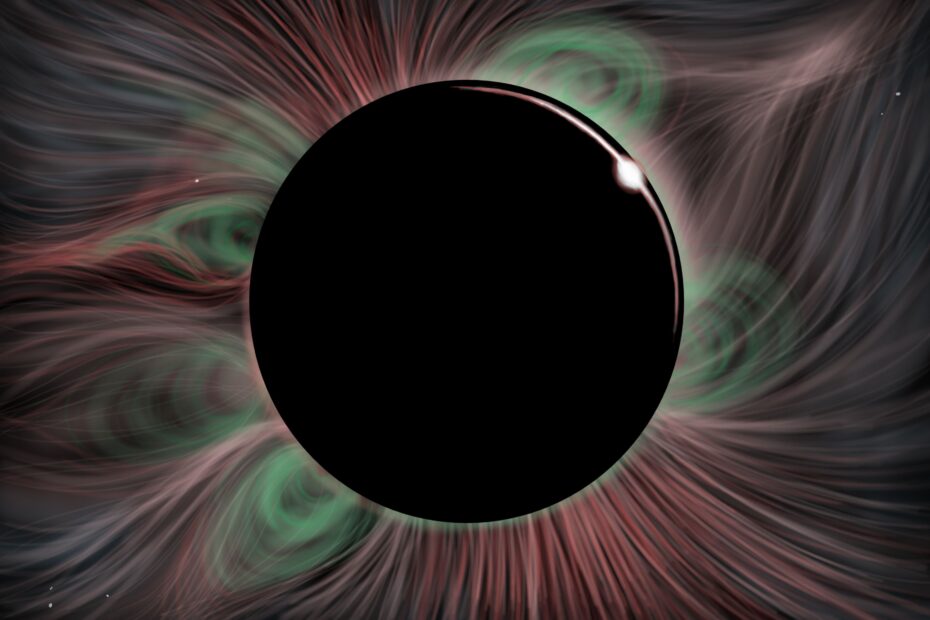On April 8, a total solar eclipse will be visible from most of Southern Quebec, beginning at 2:14 p.m. and ending at 4:36 p.m. It will be the first total eclipse visible in Montreal since 1932 and will be the only total eclipse in the Greater Montreal Area for the next 180 years. To celebrate, the Trottier Space Institute will be holding a public Eclipse Fair and Viewing Party at McGill’s Downtown Campus and the Gault Nature Reserve.
What we experience as solar eclipses are largely a cosmic accident. An eclipse occurs when observers on Earth perceive the Moon’s angular size to be roughly the same as the Sun’s, allowing the Moon to fully obscure the Sun from view. A total eclipse extinguishes daylight and can drop the ambient temperature by as much as 10°C.
If the Moon’s path about the Earth were contained in the orbital plane of the Sun – known as the ecliptic – we would expect to see a solar eclipse once every 28 days. The Moon’s orbit, however, does not stay in the ecliptic: a 5° offset between the two orbital planes guarantees that, more often than not, prospective eclipses wind up becoming disappointing near-misses. Because of this, total solar eclipses are incredibly rare, passing over any spot on the Earth only once every few centuries.
Because of their rarity, people have been fascinated by solar eclipses since the faintest beginnings of civilization. The word “eclipse” comes from the Greek ékleipsis, meaning “to abandon,” but the first recorded eclipses may have occurred much earlier, possibly as early as 3340 B.C.E.
It is dangerous to look directly at the Sun before totality – the moment at which the Moon completely obscures the Sun. Modern eclipse observers use special protective lenses, or solar filters, to block out the Sun’s rays. The filters are coated with materials that decrease the intensity of incoming light or, in some cases, block out all but a certain wavelength of light. With this equipment, even casual observers can stare safely at the Sun for extended periods of time and discern a variety of interesting phenomena. Often, coronal mass ejections, streaks of plasma cast from the surface of the Sun, can be faintly seen behind the shadow of the Moon.
During eclipses, scientists are allowed glimpses of astronomical phenomena that the brightness of our star would normally keep hidden. The 1919 total solar eclipse, for example, was used by Arthur Eddington and other astronomers to verify Einstein’s theory of general relativity: light from distant stars was slightly bent by the Sun’s enormous gravity, in line with Einstein’s predictions. Nowadays, astronomical research tends to focus on transit events occurring at other, more distant stars, rather than local eclipses. Here at McGill, researchers use eclipses in distant star systems to analyze the atmospheric composition of exoplanets, in order to determine whether they may be candidates for life outside the Solar System.
“When a planet passes in front of a star,” says Dr. Nicolas Cowan, Professor of Astrobiology at McGill, “its atmosphere appears bigger when viewed at different wavelengths of light, which can tell you what molecules are present in that atmosphere. Through this technique, we’ve already discovered lots of greenhouse gases in different atmospheres. Once we detect an atmosphere with, say, water vapour in it, then we can start to try really hard to see if we can detect other gases, like ozone or methane.”
This method, known as transit spectroscopy, will be applied to much of the data collected by the James Webb Space Telescope, but eclipses remain a unique opportunity for the public to make interesting observations much closer to Earth using simple equipment. As of March 18, municipal libraries across Montreal have begun distributing eclipse glasses, and the English Montreal School Board and LBPSB have announced that April 8 will be a pedagogical day, which means amateur astronomers of all ages will have ample time to watch the rare transit as it occurs. As part of the Eclipse Fair, several telescopes outfitted with solar filters will be set up at the downtown campus. There will also be a handful of smaller solar scopes, which reflect the light of the sun into a small viewing box and allow the Moon’s shadow to be viewed without risk.
Much of the equipment will be managed by graduate and undergraduate volunteers from the Trottier Space Institute and the Anna McPherson Observatory. “Students are heavily involved in the eclipse fair,” says Carolina Cruz-Vinaccia, Program Administrator at the Trottier Space Institute (TSI). “We couldn’t do anywhere near the amount of outreach that we currently do without them. They’re really passionate about communicating their work, and they want to make sure people know what’s going on at the university.”
Cruz-Vinaccia heads the Eclipse Task Force organizing events for the upcoming eclipse. Activities at the Fair will include a make-your-own pinhole camera station, a photo booth, and a Solar System Walk, where the planets will be arranged to scale from Roddick Gates to the McCall-McBain Arts Building. The Redpath Society, in collaboration with TSI, will be organizing a program on the cultural significance of eclipses throughout history and their effect on wildlife, while the Rare Books and Special Collections section of the McLennan Library will be displaying records of eclipses from antiquity. In the wider Montreal community, Space Explorers, a McGill student-led physics outreach program, will be holding workshops to teach elementary school students about what eclipses are and how they work in preparation for April 8.
“The idea is to give not only the McGill community, but the surrounding community the opportunity to experience this once-in-a-lifetime event together,” Cruz-Vinaccia says. “Anecdotally, people who’ve seen total eclipses before say that it’s quite a moving experience, and we feel that it would be something that’s better viewed together.”
